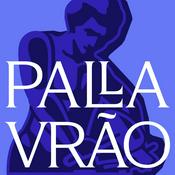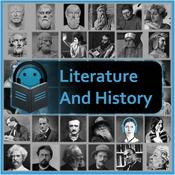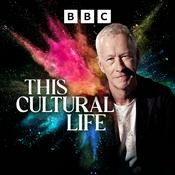684 episódios

Marc Chagall | I and the Village
09/1/2026 | 11min
Marc Chagall (born Moishe Shagal, 1887-1985) was a prominent Russian-French modern artist whose life spanned nearly a century of dramatic historical change. Originating from a Hasidic Jewish community near Vitebsk, Russian Empire (now Belarus), Chagall pursued art studies in St. Petersburg before immersing himself in the Paris art scene from 1911-1914. There, he absorbed influences from Cubism and Fauvism, blending them with his unique heritage of Russian folklore and personal memories to forge his signature dreamlike style. Trapped in Russia by World War I, he married his muse, Bella Rosenfeld, and briefly served as Commissar of Arts in Vitebsk after the Revolution. Chagall later returned to Paris, only to flee Nazi persecution during World War II, finding refuge in the United States where Bella tragically died. Returning to France after the war, he married Valentina "Vava" Brodsky and embarked on a prolific late career, expanding into ceramics, sculpture, and notably, magnificent stained glass works, continuing to create until his death at 97. This is an encore presentation. Every January/February, I release daily episodes to refresh everyone's memory on the 64 artists and artworks that will be included in my Arts Madness Tournament held in March. While most of these daily episodes will be reruns, I will continue publishing new episodes on Mondays. Check out my other podcasts Fun Facts Daily | Art Smart | Rainbow Puppy Science Lab Who ARTed is an Airwave Media Podcast. If you are interested in advertising on this or any other Airwave Media show, email: [email protected] Learn more about your ad choices. Visit megaphone.fm/adchoices

Henri Matisse | Goldfish
08/1/2026 | 10min
Henri Matisse was born in Northern France on December 31, 1869. His father was a successful grain merchant. In 1887, Henri was well on his way to a successful, respectable career when he went to Paris. He was going to study law, and was working in that arena for a while then at age 20, he had appendicitis. His mom gave him a paint set so he could have something to do while he recovered, and he decided to become an artist. Links: Katsushika Hokusai Vincent van Gogh Henri de Toulouse Lautrec JMW Turner This is an encore presentation. Every January/February, I release daily episodes to refresh everyone's memory on the 64 artists and artworks that will be included in my Arts Madness Tournament held in March. While most of these daily episodes will be reruns, I will continue publishing new episodes on Mondays. Check out my other podcasts Fun Facts Daily | Art Smart | Rainbow Puppy Science Lab Who ARTed is an Airwave Media Podcast. If you are interested in advertising on this or any other Airwave Media show, email: [email protected] Learn more about your ad choices. Visit megaphone.fm/adchoices

Pierre-Auguste Renoir | Luncheon of the Boating Party
07/1/2026 | 32min
Today, Renoir is remembered as one of the greatest painters of the Impressionist movement. His paintings are soft and delicate, but his life and his work was a painful struggle. Most painters pride themselves on their ability to work with their hands. They spend years practicing, developing fine motor skills and muscle memory to easily render a beautiful image, but Renoir’s hands weren’t on board with the plan. As his son Jean recounted “Visitors who were unprepared for this could not take their eyes off his deformity. Though they did not dare to mention it, their reaction would be expressed by some such phrase as ‘it isn’t possible! With hands like that, how could he paint those pictures?” In 1899, Pierre-Auguste Renoir was sticken with Rhumetiod Arthritis which not only caused painful inflammation of the joints. It left his hands deformed. While even the most minor movements of his hand or wrist would bring pain, Renoir persisted. He continued making beautiful paintings until his death 20 years later because as he said, “pain passes, but beauty remains.” This is an encore presentation. Every January/February, I release daily episodes to refresh everyone's memory on the 64 artists and artworks that will be included in my Arts Madness Tournament held in March. While most of these daily episodes will be reruns, I will continue publishing new episodes on Mondays. Check out my other podcasts Fun Facts Daily | Art Smart | Rainbow Puppy Science Lab Who ARTed is an Airwave Media Podcast. If you are interested in advertising on this or any other Airwave Media show, email: [email protected] Learn more about your ad choices. Visit megaphone.fm/adchoices

Ansel Adams | Monolith, the Face of Half Dome
06/1/2026 | 19min
Ansel Adams (1902-1984) was an iconic American photographer renowned for his dramatic black and white landscapes, particularly of Yosemite National Park. His distinctive style, characterized by sharp focus, expansive tonal range, and masterful composition, was shaped by his early passion for music, his deep connection with nature, and his innovative approach to photography. Adams co-founded Group f/64, advocating for "straight photography," and developed the Zone System, a precise technique for controlling exposure and development. His most famous works, like "Monolith, the Face of Half Dome," showcase his technical skill and artistic vision, capturing the grandeur of the American West. A dedicated conservationist, Adams used his photography to advocate for environmental protection. His legacy extends beyond his breathtaking images, inspiring generations of photographers and leaving an indelible mark on the art world. Check out my other podcasts Fun Facts Daily | Art Smart | Rainbow Puppy Science Lab Who ARTed is an Airwave Media Podcast. If you are interested in advertising on this or any other Airwave Media show, email: [email protected] Learn more about your ad choices. Visit megaphone.fm/adchoices

El Anatsui | Old Man's Cloth
05/1/2026 | 11min
El Anatsui is a leading contemporary sculptor born in 1944 in Anyako, Ghana. Trained at the Kwame Nkrumah University of Science and Technology, Anatsui’s early education was heavily influenced by Western art traditions, which often neglected the rich artistic heritage of West Africa. After relocating to Nigeria in 1975 to teach at the University of Nigeria, Nsukka, he joined the Nsukka group, a collective dedicated to reviving traditional practices like Uli—an Igbo art form characterized by fluid linear drawings. This shift marked the beginning of his lifelong endeavor to blend traditional African motifs with contemporary sculptural techniques. Anatsui is best known for his monumental "metal cloths," which he began creating in the late 1990s using discarded liquor bottle caps and copper wire. A prime example is the 2003 piece Old Man's Cloth, a massive work measuring approximately 16 feet by 17 feet. These installations are intentionally malleable, allowing curators to fold and drape them differently for every display to create a "non-fixed form". Beyond their visual resemblance to traditional Ghanaian Kente cloth, these materials carry profound historical weight; they reference the transatlantic "Triangle Trade," where alcohol was used as a primary currency by Europeans to exchange for enslaved people in Africa. By employing a communal studio process involving dozens of assistants, Anatsui transforms industrial waste into high art that comments on colonialism, globalization, and the enduring strength of African heritage. Check out my other podcasts Fun Facts Daily | Art Smart | Rainbow Puppy Science Lab Who ARTed is an Airwave Media Podcast. If you are interested in advertising on this or any other Airwave Media show, email: [email protected] Learn more about your ad choices. Visit megaphone.fm/adchoices
Mais podcasts de Arte
Podcasts em tendência em Arte
Sobre Who Arted: Weekly Art History for All Ages
Ouve Who Arted: Weekly Art History for All Ages, Blitz Posto Emissor e muitos outros podcasts de todo o mundo com a aplicação radio.pt

Obtenha a aplicação gratuita radio.pt
- Guardar rádios e podcasts favoritos
- Transmissão via Wi-Fi ou Bluetooth
- Carplay & Android Audo compatìvel
- E ainda mais funções
Obtenha a aplicação gratuita radio.pt
- Guardar rádios e podcasts favoritos
- Transmissão via Wi-Fi ou Bluetooth
- Carplay & Android Audo compatìvel
- E ainda mais funções


Who Arted: Weekly Art History for All Ages
descarregue a aplicação,
ouça.



























